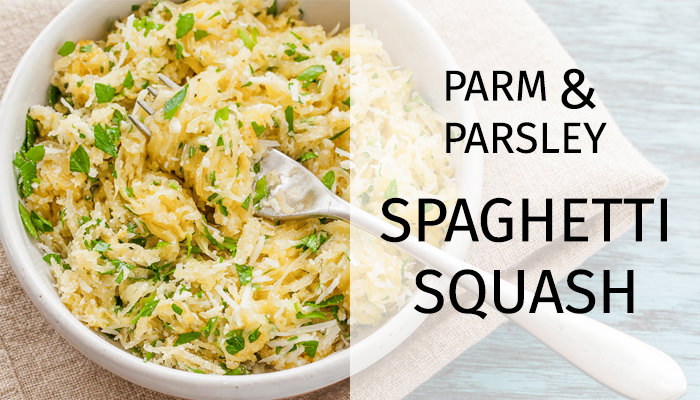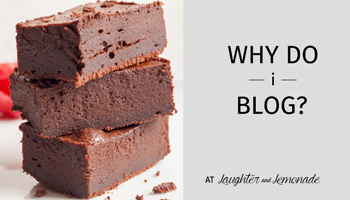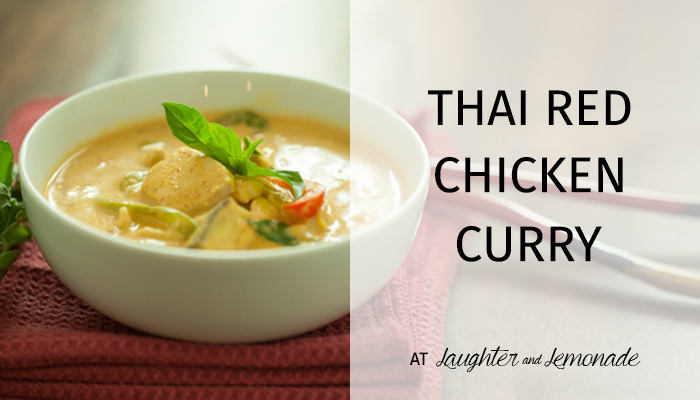Let me sum it up for your really quickly = {warm cooked kale with apple cider vinegar and soy sauce} + {chilled spiralized raw beets} + {chilled spiralized raw carrots} + {grape tomatoes} + {goat cheese} + {warm, spicy, salty, sweet quick honey-candied walnuts}.
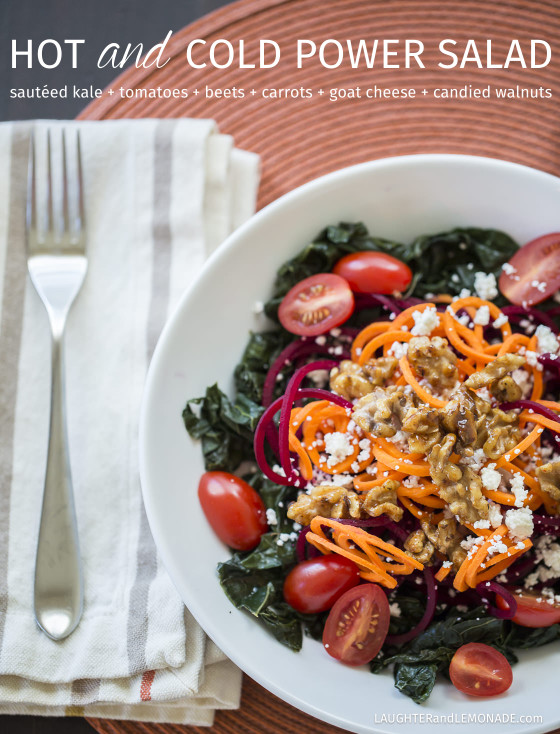
It comes together in just three easy steps. Sauté the kale. Add the raw veggies and goat cheese. Quick honey-candy the nuts (which makes your dressing at the same time) and *voila*.
This is a meal that when you eat it, you just. feel. good. Every ingredient is packed with nutrients. The vibrant colors say it all! Don’t believe me? Let’s break it down (and help me study vitamins and minerals for my RD exam! Two birds. One stone. Bam.) Here we go:
Vitamin C. This salad has almost 3x the amount of vitamin C you need in a day!
Don’t worry, it’s safe to consume up to ~23x the amount of vitamin C needed in one day. Adult women need 75 mg/day and adult men need 90 mg/day. As mentioned, it’s not recommended that women exceed 1,800 mg/day or men exceed 2,000 mg/day.
Along with adequate intake of vitamin C promoting immunity and healing (as we all well know), vitamin C also enhances iron absorption from plant sources! If you don’t eat meat (or much of it), you’re more likely to become iron deficient because iron is less available to our bodies when it’s in plant form. Especially if you follow a strict vegan diet, be sure to get plenty of vitamin C so you can better absorb iron.
In one serving of this dish (half the recipe) you will get most of the vitamin C from the kale (268%) while the tomatoes yield 10%, carrot 12%, and beet 7% of the daily recommended intake of vitamin C.
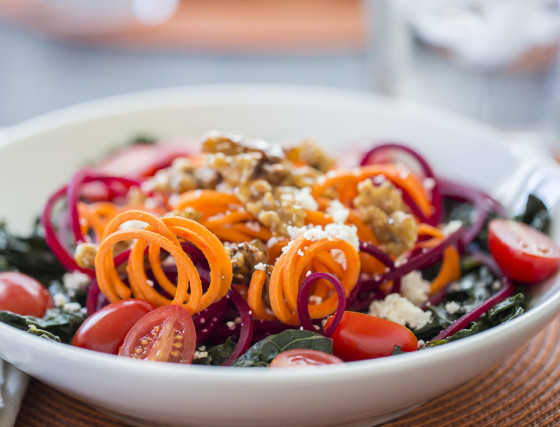
Vitamin K. Get 3x your daily vitamin K needs in this one dish!
The kale, and dark leafy greens in general, are the richest source of vitamin K providing 282% of your daily need. 20% of your RDA comes from the carrot, 10% from the EVOO, and a little from the goat cheese and tomato in this recipe.
A 2007–2010 study found that about one-third of the U.S. population took in more vitamin K than recommended (reference). We are unable to determine exactly how much our bodies get because along with eating it, our intestines also make vitamin K. A maximum daily amount of vitamin K safe is unclear, but we do know that consistent high intake does lead to toxicity since it is a fat soluble vitamin and the body will store excess. Symptoms of vitamin K toxicity include breakdown of red blood cells and jaundice. If you’re taking anticoagulant drugs, vitamin K can interfere with these as well.
Don’t worry, as long as you’re not mowing down cups and cups of dark leafy greens day after day, you are fine. Everything in moderation right? Even the things that are good for us! Like I mentioned, dark leafy greens are the most potent source we eat. Here is a list of greens in order from MOST to LEAST vitamin K content: collards, turnip greens, spinach, and kale. With a varied diet that includes these foods, you’re fine.
Vitamin A. This doesn’t just meet your daily RDA of vitamin A, it meets it twice!
Vitamin A is measured in Retinol Activity Equivalents (RAE). Women need 700 mcg RAE per day and men need 900; this salad gives you about 1720 mcg! But read on…
Now vitamin A is a fat-soluble vitamin, meaning excess is stored in your body fat. So you do have to be careful about eating excess vitamin A on a consistent basis. Your body will store it up and it could reach a toxic level. While you need 700-900 mcg RAE per day, it is safe to consume up to 3,000 mcg/day, so this salad puts your 57% of the way there, leaving room for other meals in your day that might contain vitamin A. I don’t recommend consistently, intentionally exceeding your RDA for vitamin A unless you’re working with a medical professional with an intended goal.
Thank the carrot in this recipe for providing 127% of your RDA for vitamin A, the kale for 64%, goat cheese for 14% and tomato for 10%.
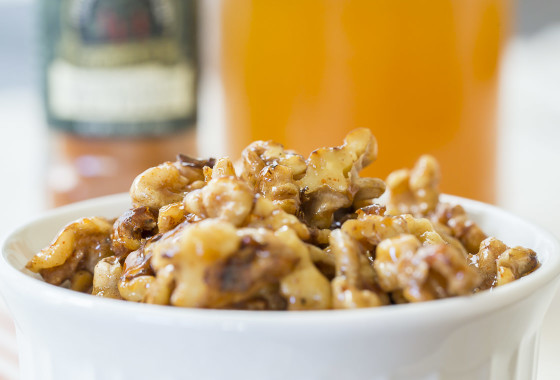
Manganese (Mn). This salad meets 125% of your daily manganese needs.
Mn is a mineral and it’s safe to have up to 600% of your needs per day, so with this dish you’re good to go. The richest sources of Mn in this recipe are the kale and walnuts, each meeting about 50% of the RDA.
We need Mn for the metabolism (or break down) of the carbs, fat and protein we eat. It also has a role in reproduction, growth, and our connective and skeletal tissues.
Copper (Cu). This meal meets 57% of your needs for this mineral.
Did you know you store about 100 mg of copper in your liver? It’s necessary in making red blood cells, which we turn over about every 120 days. It also helps maintain nerve tissue and is required for the absorption of iron in hemoglobin (the iron-containing part of red blood cells). Think avoiding anemia and fatigue. Doesn’t mean you should load up though, keep your intake below 10,000 mcg/day.
The kale in this dish is what meets 20% of your copper RDA and the walnuts jump you another 22% toward the RDA. The goat cheese, carrot, beet will give you a little too.
Potassium (K). Get 45% of your daily K needs here.
Most all fruits and veggies contain a good bit of K. There is no upper limit for how much K a healthy individual can eat. If you’re taking K in supplement form, however, be cautious because you can overdo it.
Potassium (with sodium) helps maintain our fluid balance. When we talk fluid balance, it meas we don’t hold in or excrete out more water than we need. It also works with calcium in our muscle activity.
The kale meets 18% of your daily K needs while the carrot meets 11%, beet 8%, walnut 4% and tomato 3%.
Folate. This dish meets 41% of your daily recommendation for folate.
Most of this vitamin comes from the beets (which offer 22% of the RDA) while the kale offers 10%, walnuts 7%, and tomatoes ~2%.
Women and men need 400 mcg of Dietary Folate Equivalents (DFE) per day. This amount increases in pregnancy and lactation (to 600 and 500 mcg DFE/day respectively.)
Folate is critical in DNA & RNA production. Think back to your high school biology days learning about cells and making genetic material. We’re diggin’ deep here people! Folate needs increase during times of rapid cell production and turnover like in pregnancy. Women don’t actually need 400 mcg/day, but because of such a high incidence of birth defects in the past (related to inadequate folate) 400 is the new standard since only 49% of pregnancies are planned (resource). Adequate folate is essential in the first trimester, when many times a woman might be unaware she’s pregnant. Hence the safe bet to always meet your folate RDA if having kids is “on the table” no matter what.
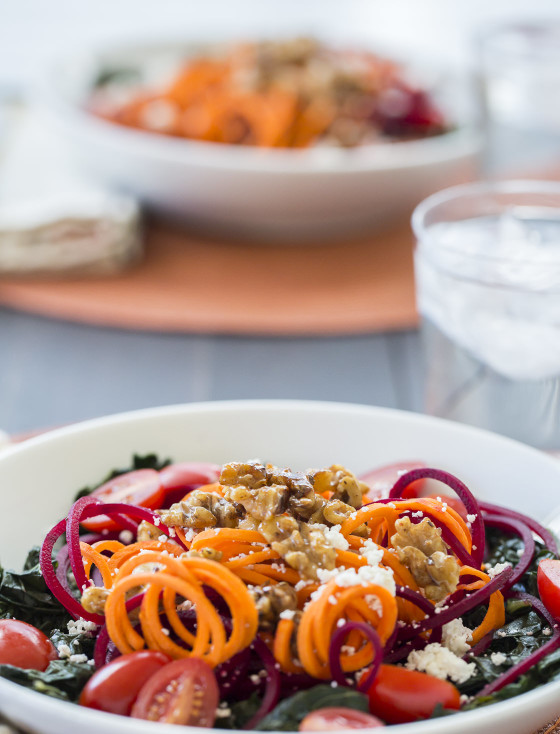
Vitamin B6. Get 40% of your daily B6 needs here.
Both men and women ages 19-50 need 1.3 mg B6 per day. As we age, or B6 needs take a slight up-tick. Women 51+ years old need 1.5 mg/day while men 51+ need 1.7 mg/day. Thankfully, according to the National Institute of Health, B6 deficient diets are uncommon in the US when we eat a variety of foods. You can find B6 in poultry, fish, organ meats, potatoes and starchy vegetables, and most fruit. Here you get 18% of the RDA from kale, 8% from walnuts, 8% from carrots, 3% from beets, ~2% from tomatoes, and 1% from goat cheese.
B6 is necessary in protein metabolism. It is also used in carb and fat metabolism. It plays a role in immune function and reducing your risk for atherosclerosis (which is plaque buildup in arteries and the leading cause of heart attack).
Calcium (Ca). Meet 34% of your calcium needs in this meal, and guess what. The biggest contributor of Ca isn’t the cheese!
Yes, the goat cheese offers 8% of your daily Ca needs (and more if you add more than the ounce to your salad called for in the recipe). The kale is actually what meets 18% of your Ca needs, more than any ingredient in this meal. You’ll also get some from the carrot and walnuts.
You can only absorb about 500 mg of Ca at a time, so it’s best to split your Ca intake up throughout the day. Having 34% at this meal is perfect. One of your three daily meals provides 1/3 of your daily Ca? I couldn’t have planned it better! (See… if you don’t worry about nutrition, eat a variety, make good choices, it all works out.)
Riboflavin (vitamin B2). Find 29% of the RDA for riboflavin in this salad.
The goat cheese offers 11% of the RDA, kale 10%, carrots 4%, beets 2%, and walnuts 2%.
Riboflavin is necessary to convert vitamin B6, folate, niacin, and vitamin K to their active forms. It is involved in many metabolic reactions that break down the foods you eat for energy. It also helps form red blood cells, maintain body tissues, and protest against common skin and eye disorders.
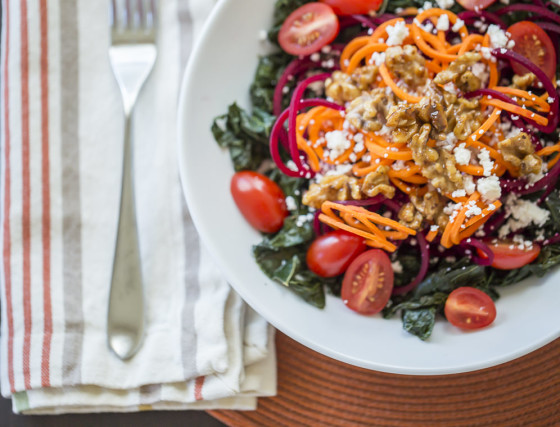
Iron (Fe). 26% of your daily iron, down the hatch with this puppy.
Iron is one of the most common mineral deficiencies in our diets. An adult has about 3-5 g of body iron: about 70% of that is in our blood to help transport oxygen and 10-20% is in our muscle tissue. The remaining 20-30% resides in our liver, bone marrow, and spleen.
Iron allows us to burn food for energy (or in more sciencey terms, utilize oxygen to eliminate carbon dioxide). It’s also necessary in making red blood cells (which as I mentioned turn over about every 120 days).
The kale is the richest source of iron in this meal meeting 12% of your daily need followed by the walnuts 5%, beet 4%, goat cheese 3%, and carrot 2%.
(Also refer back to vitamin C at the top of the post to see it’s connection with iron!)
Thiamin (vitamin B1). Gobble this salad for 25% of your RDA for thiamin.
10% of the RDA comes from the kale while the walnuts provide 6%, the carrots 5%, beets 2%, tomatoes 1%, and goat cheese 1%.
Thiamin maintains muscle tone of your gastrointestinal tract. Yep, there’s muscles all up in there that push food through your system. It’s needed for normal function of nerves and it aids in carbohydrate metabolism (break down).
The most rich source of thiamin? Pork.
Vitamin E. This dish meets 11% of your daily needs of vitamin E.
Both women and men need 15 mg/day. The richest source of vitamin E here is the olive oil, but the carrot, walnuts, and tomato give a ‘lil bit too.
Vitamin E is a powerful antioxidant which means it’s protective against disease like cancer. It also improves your immune response.
To meet the rest of your daily vitamin E needs, choose foods like wheat germ, sunflower seeds, and almonds. Peanut butter, spinach, broccoli, kiwi and mango also contain vitamin E, just not as much as the other listed foods.
* * * *
Phew! You made it! If you’re still here I’m impressed. You must really be interested in nutrition! Or you just scrolled to the bottom. Either way it’s cool. We can still be friends.
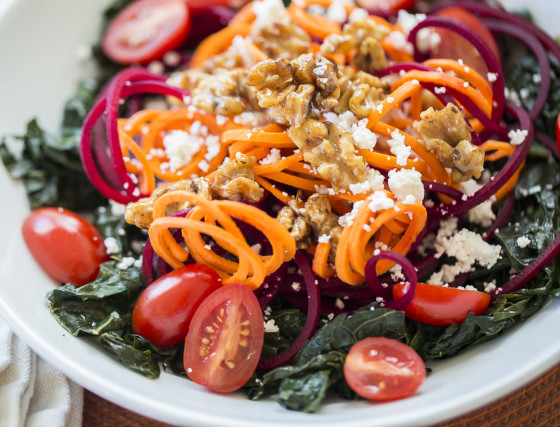
- 1 tablespoon olive oil
- 2 small bunches dino kale, ribs removed and leaves sliced
- 2 tablespoons apple cider vinegar
- 2 tablespoons low-sodium soy sauce
- 2 carrots, peeled and spiralized (or shredded)
- 1 beet, peeled and spiralized (or shredded)
- ½ cup halved grape tomatoes
- 2 oz goat cheese, crumbled
- ½ cup raw walnuts, roughly chopped
- 2 tablespoons honey
- 1 tablespoon olive oil
- ¼ teaspoon cayenne pepper (more or less depending on your spice preference)
- ¼ teaspoon salt
- For the kale, heat a large skillet over medium heat. Add the olive oil then kale. Sauté for about five minutes until wilted. Add apple cider vinegar and soy sauce. Cook another minute. Turn the heat off.
- Divide the kale among two plates. Top each with carrots, beets, tomatoes and goat cheese. Set aside.
- Add walnuts to a small skillet over medium, medium-low heat. Stir occasionally until toasted about five minutes. Add the honey, olive oil, cayenne and salt. Stir to combine until the honey is completely melted. Pour the hot nuts and warm "dressing" mixture over the beets and carrots then serve!
